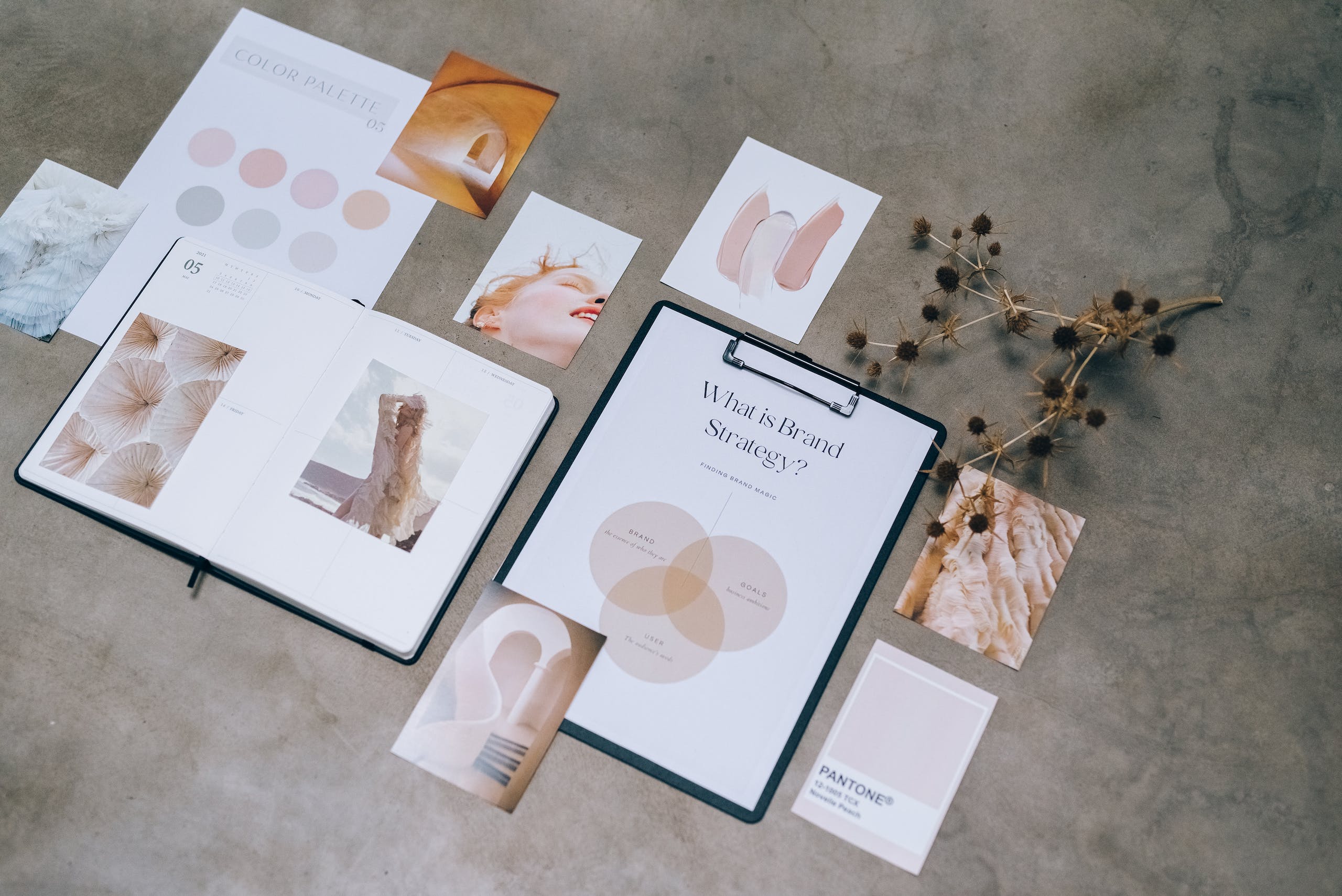Creating A Content Strategy For Your Blog
Are you struggling to attract and engage your target audience with your blog? It’s time to create a content strategy that will take your blog to the next level.
We will guide you through the process of developing a content strategy that will help you achieve your blogging goals. By identifying your target audience, setting clear goals, and conducting keyword research, you will be able to create content that resonates with your readers and drives traffic to your blog.
We will also discuss the importance of planning your blog topics and themes, developing a consistent posting schedule, and incorporating different content formats to keep your audience engaged.
We will show you how to analyze and adjust your strategy to ensure that you are continually improving and meeting your blogging objectives.
Get ready to take your blog to new heights with a well-crafted content strategy.
Identifying Your Target Audience
Imagine sitting in a cozy coffee shop, sipping on your favorite latte, and writing a blog post that perfectly resonates with your target audience. It’s a feeling of accomplishment and connection that every blogger strives for.
To achieve this, the first step is identifying your target audience. Knowing who your readers are is crucial for creating a content strategy that hits the mark.
Start by defining the demographics of your ideal audience. Consider their age, gender, location, and interests. This will help you tailor your content to their specific needs and preferences.
Next, dig deeper and understand their motivations and pain points. What are their goals and aspirations? What challenges do they face? By empathizing with your audience, you can create content that speaks directly to them, offering solutions and insights that they can relate to.
Don’t forget to analyze your competition. Who else is targeting the same audience? Take a look at their content and identify any gaps or opportunities that you can capitalize on. This will give you a competitive edge and ensure that your content stands out.
Remember, creating a content strategy starts with understanding your target audience. By putting yourself in their shoes, you can craft blog posts that truly resonate and build a loyal readership.
So, grab your latte, find your cozy spot, and start writing content that connects.

Setting Clear Goals and Objectives
Establishing clear goals and objectives is crucial for mapping out a roadmap to success in developing your blog. When you have a clear understanding of what you want to achieve, it becomes easier to create a content strategy that aligns with your objectives.
Start by asking yourself what you want your blog to accomplish. Do you want to increase your website traffic? Generate leads? Build brand awareness? Having specific goals in mind will help you focus your efforts and make strategic decisions about the type of content you create and how you promote it.
Once you have identified your goals, it’s important to set measurable objectives that can be tracked and evaluated. For example, if your goal is to increase website traffic, your objective could be to increase monthly page views by a certain percentage within a specific timeframe. Setting these objectives will allow you to monitor your progress and make adjustments to your content strategy if needed.
In addition to setting goals and objectives, it’s also important to ensure they are realistic and attainable. It’s great to have ambitious goals, but they should also be achievable given your available resources and time constraints. Setting unrealistic goals can lead to frustration and disappointment, so be sure to set goals that are challenging yet within reach.
By setting clear goals and objectives for your blog, you are setting yourself up for success. It will provide you with a clear direction and help you create a content strategy that is focused and effective. So take the time to define your goals and objectives, and watch your blog thrive.
Conducting Keyword Research
Conducting keyword research helps you discover the words and phrases that your target audience is using to search for information related to your blog topic. By identifying these keywords, you can optimize your blog content to attract more organic traffic from search engines.
Start by brainstorming a list of potential keywords that are relevant to your blog niche. Think about what your target audience might type into a search engine when looking for information on your topic.
Once you have a list of potential keywords, you can use keyword research tools like Google Keyword Planner or SEMrush to gather data on search volume and competition for each keyword.
When conducting keyword research, it’s important to focus on long-tail keywords. These are longer, more specific phrases that have less competition and higher conversion rates. Long-tail keywords can help you target a more specific audience and increase the chances of your content appearing in search results.
Keyword research should be an ongoing process. As you create new blog posts, continue to conduct keyword research to find new and relevant keywords to target. By consistently optimizing your content for the right keywords, you can improve your blog’s visibility and attract more targeted traffic to your site.
Planning Your Blog Topics and Themes
Picture yourself brainstorming a variety of captivating and engaging blog topics and themes that’ll capture the attention of your readers and keep them coming back for more. Planning your blog topics and themes is a crucial step in creating a content strategy that resonates with your target audience.
Start by identifying the key areas of interest and expertise that you want to focus on. Consider what topics are currently trending and relevant to your niche. Brainstorm a list of potential blog topics that align with your goals and will provide value to your readers.
Once you have a list of potential topics, organize them into themes or categories. This will help you create a cohesive and structured content strategy. Themes allow you to explore different angles and perspectives on a specific topic, providing your readers with a well-rounded experience. They also help you stay organized and ensure that your content is diverse and balanced.
When planning your blog topics and themes, it’s important to consider your target audience’s preferences and needs. Research their interests, pain points, and questions they may have. This will help you choose topics that are relevant and valuable to them.
Remember to also consider your own expertise and passion. Choose topics that you’re knowledgeable about and passionate to write about. This’ll ensure that you create high-quality content that resonates with your readers and establishes you as an authority in your niche.
Planning your blog topics and themes is an essential part of creating a successful content strategy. By brainstorming captivating topics, organizing them into themes, and considering your target audience’s preferences, you can create engaging and valuable content that keeps your readers coming back for more.
Developing a Consistent Posting Schedule
Developing a consistent posting schedule ensures that your audience stays engaged and eagerly anticipates your next blog post. When you have a regular schedule, your readers know exactly when to expect new content from you, and this helps to build trust and loyalty. It also shows that you’re committed to providing valuable information on a consistent basis.
One of the first steps in developing a posting schedule is to determine how often you’ll publish new blog posts. This can vary depending on your niche, your available time, and the type of content you create. Some bloggers choose to post daily, while others may opt for a few times a week or even once a month. The key is to find a frequency that works for you and stick to it.
Consistency is crucial because it allows you to establish a routine and set expectations for both yourself and your audience. By consistently publishing new content, you’re more likely to attract and retain readers who are interested in your blog’s topic. It also helps you to stay organized and focused on creating high-quality content.
To ensure that you stay on track with your posting schedule, it can be helpful to create a content calendar. This calendar will serve as a roadmap for your blog and help you plan ahead. You can schedule topics, plan out when to create and publish each post, and even include reminders for promoting your content on social media.
Overall, developing a consistent posting schedule is an essential part of your content strategy. It not only keeps your audience engaged and excited about your blog, but it also helps you stay organized and focused on delivering valuable content consistently. So, take the time to plan your posting schedule and stick to it – your audience will thank you for it!

Incorporating Different Content Formats
Now that you have a consistent posting schedule in place, it’s time to take your blog to the next level by incorporating different content formats. This will not only keep your audience engaged but also attract new readers who may prefer different types of content.
One effective way to diversify your content is by incorporating different formats such as videos, infographics, and podcasts. Videos can bring your blog posts to life by visually demonstrating concepts or showcasing products.
Infographics are great for presenting data or complex information in a visually appealing and easy-to-understand format.
Podcasts, on the other hand, allow you to connect with your audience on a more personal level by discussing topics in an audio format.
By incorporating different content formats, you can cater to different learning styles and preferences. Some people prefer watching videos, while others enjoy reading or listening. By providing different formats, you ensure that your content is accessible to a wider audience.
Remember, the key is to maintain consistency in the quality of your content across all formats. Each format should align with your blog’s overall theme and provide value to your readers. So, don’t be afraid to experiment with different formats and see what works best for your blog.
Analyzing and Adjusting Your Strategy
To truly optimize your blog’s performance, you need to take a step back and objectively analyze how well your current approach is working and make necessary adjustments.
Analyzing and adjusting your content strategy is crucial for keeping your blog fresh and engaging for your audience.
First, you should start by analyzing your blog’s performance metrics. Look at your website analytics to see which blog posts are performing well in terms of views, engagement, and conversions. Identify the topics and formats that resonate most with your audience and replicate that success in future content.
Next, pay attention to the feedback you receive from your readers. Are they leaving comments, sharing your posts, or asking questions? Take note of what they are saying and use it to guide your content strategy. Consider conducting surveys or polls to gather more specific feedback on what your audience wants to see more of.
Keep an eye on your competitors. Look at what they are doing well and learn from their strategies. This doesn’t mean copying their content, but rather understanding what works in your niche and finding ways to differentiate yourself.
Lastly, don’t be afraid to make adjustments to your content strategy. Experiment with different formats, topics, and posting frequencies to see what resonates best with your audience. Stay flexible and adapt your approach based on the feedback and data you gather.
By regularly analyzing and adjusting your content strategy, you can ensure that your blog remains relevant and continues to attract and engage your target audience.
Now you have a solid content strategy in place for your blog. You’ve identified your target audience, set clear goals, conducted keyword research, planned your blog topics, developed a consistent posting schedule, and incorporated different content formats.
Remember to always analyze and adjust your strategy as needed to ensure you’re meeting your objectives.
Keep up the great work and watch your blog thrive!







